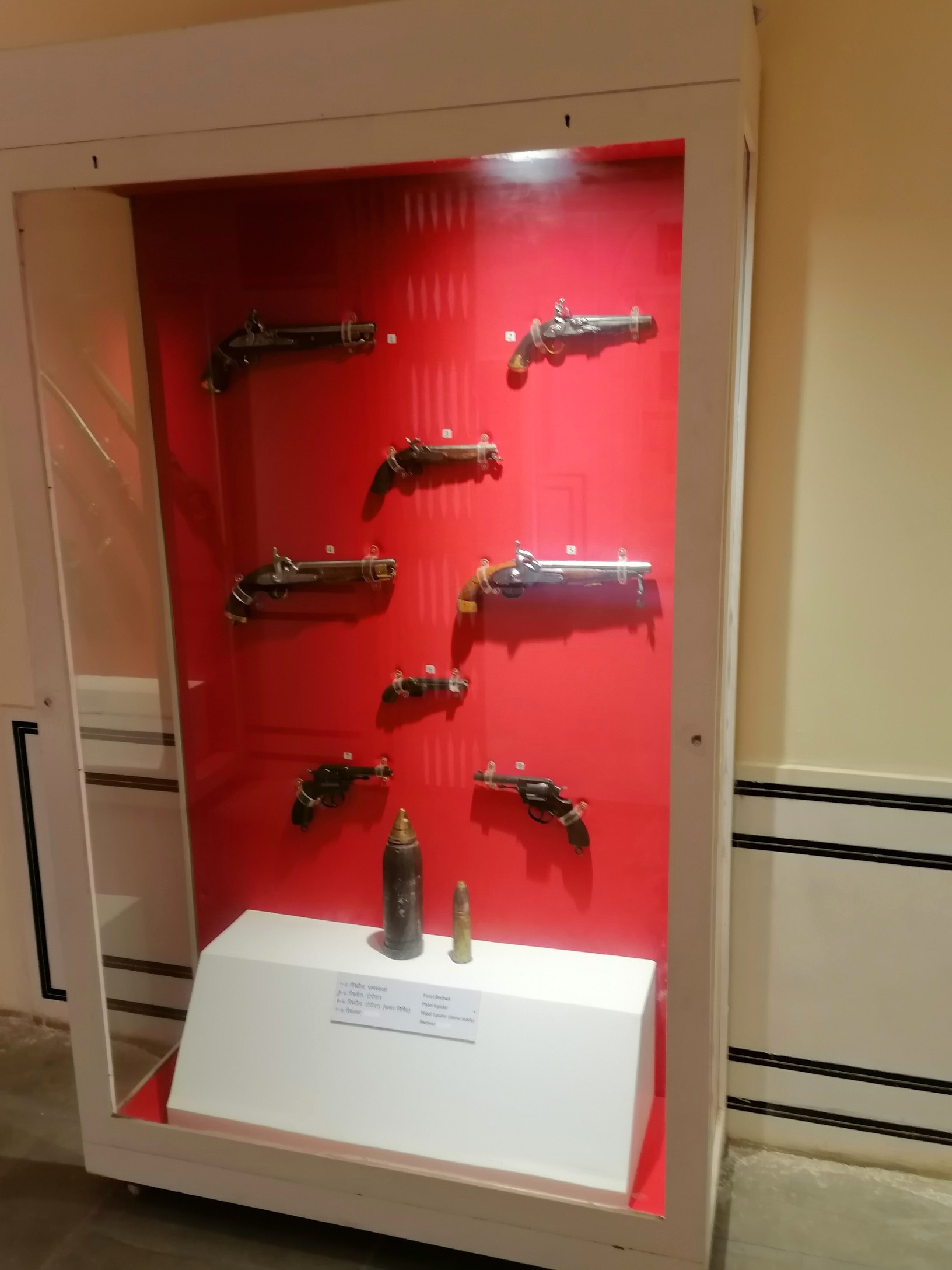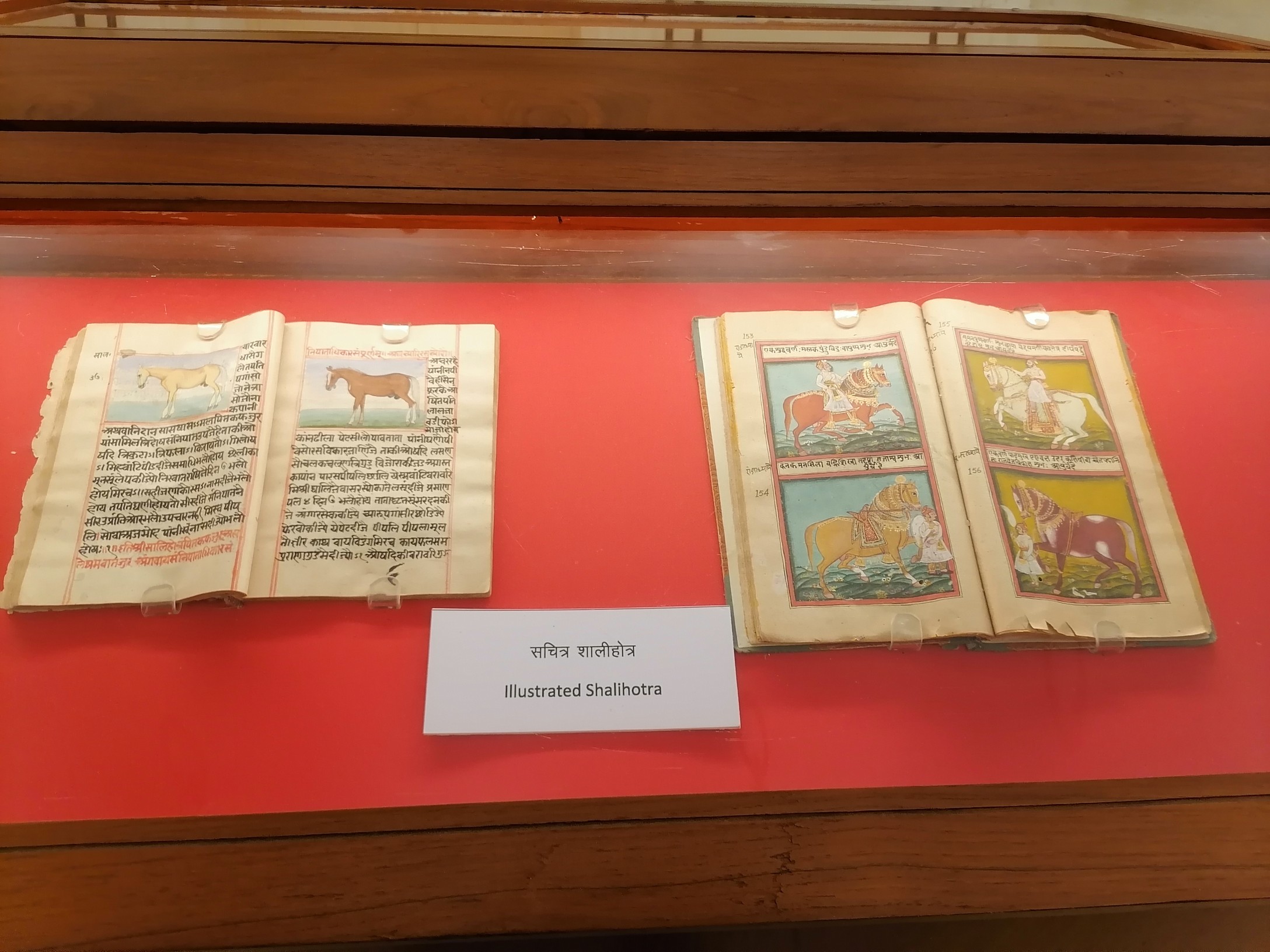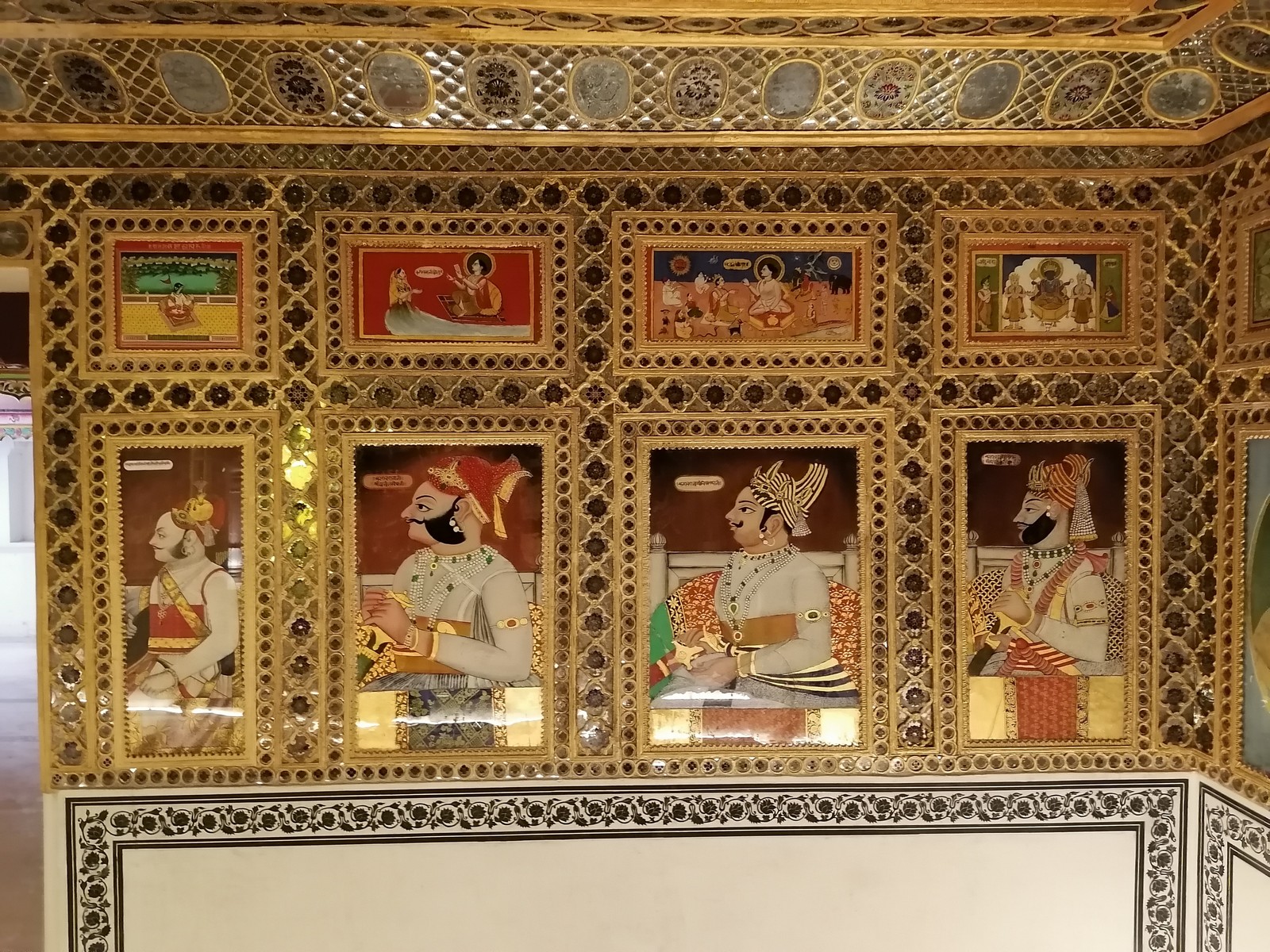Located at the City Palace near Bada Bazar, the Jhalawar Government Museum in the City Palace is an absolute gem. Raj Rana Bhawani Singh started collecting works of art from the Jhalawar State and from his travels abroad and opened a museum outside the Palace gate in 1915. The City Palace itself was built by the first Raj Rana of the new Jhalawar State, Madan Singh, between 1838 and1845 when the area was called Umedpura Chaoni (military cantonment). The walled city of Jhalrapatan nearby was the capital at that time. Raj Rana Bhawani Singh renamed Umedpura Chaoni as Brijnagar after his wife Brij Kanwar, and it later became Jhalawar.
At independence, Raj Rana Harischand Singh leased the City Palace to the Government for administrative offices so that Jhalawar could become a district with political representation. When the Palace was finally vacated in 2008 by the district collectorate and the police, it enabled the Rajasthan Archaeological and Museums Department to take over the mardana or eastern wing of the palace for an enlarged museum which opened in 2012. Recent conservation and restoration work of the Palace was awarded to the Delhi based firm Studio Pratap and Partners under the supervision of the Amber Development and Management Authority. There are now 32 galleries displaying the spectacular collection to international standards. A notable sculpture displayed at the museum dates from the 8th Century and comes from Chandrabhaga and Jhalrapatan. The wall paintings of Indian royalty and Nathwada leaders are exceptional.
Jhalawar used to be a cultural hub in the 1920s and Raj Rana Bhawani Singh built the Bhawani Natyashala or Opera House, within the Palace compound, which is being restored for its centenary in 2021. The world-famous sitar maestro Ravi Shankar and his dancer brother Udai grew up in Jhalawar where their father was in charge of the Opera House. The last music festival there was in 1991 when Ravi Shankar himself played. The building had also been used as a cinema and a badminton hall over the years.
This content has been created as part of a project partnered with Royal Rajasthan Foundation, the social impact arm of Rajasthan Royals, to document the cultural heritage of the state of Rajasthan.
This 8th century AD statue comes from Chandrabhaga. It depicts the emaciated 10 handed Goddess who was capable of destroying the whole world and who thus needed to be worshipped with blood and sacrifices to appease her.
This 8th century AD statue comes from Chandrabhaga. It depicts the emaciated 10 handed Goddess who was capable of destroying the whole world and who thus needed to be worshipped with blood and sacrifices to appease her.
The sculpture gallery is on the first floor. There is no lift.
The former Durbar Hall after renovation makes a stunning sculpture gallery.
This is the most famous sculpture in the collection from Chandrabhaga. 8th century AD.
Shiva is shown encompassing all humanity being half male and half female with an all seeing shared third eye on his forehead. He embodies the synthesis of masculine and feminine energies in the universe.
This is the most famous sculpture in the collection from Chandrabhaga. 8th century AD.
Shiva is shown encompassing all humanity being half male and half female with an all seeing shared third eye on his forehead. He embodies the synthesis of masculine and feminine energies in the universe.

There is a well displayed section on arms and armoury including these pistols but little information.
A well displayed case of fans made of sandalwood and ivory but no information on who collected them or from where. Presumably Raj Rana Bhawani Singh

These two exquisite illustrated books are very rare. The one on the left is about horse breeding.
The display cases contain objects collected by Raj Rana Bhawani Singh ranging from ivory opera glasses to palm leaf manuscripts. The full-length portraits on the walls are of Rajput rulers of neighbouring states. They were commissioned to give legitimacy to the Jhalas and to put them on an equal footing with older dynasties.
This is an example of the earliest type of bicycle which was invented in France in 1869 and was known as a penny farthing, as a farthing was one eighth of a penny. It belonged to Raj Rana Zalim Singh II who was adopted aged 10 but was deposed by the British in 1896 for his anti-British attitude officially called ‘misgovernment’. Penny Farthings are still being made and are raced in countries as distant as the UK and Tasmania.
This beautifully painted courtyard in peach and olive was once part of the Jhalawar Police Station but has been reclaimed. Murals on various themes are in each niche.
Upstairs above the painted courtyard. A riot of mirrors and reflective glass work designed to impress.
Upstairs one passes through little anti rooms and spaces all beautifully painted with floral designs incorporating birds and animals as with the homely looking chicken here.
Raj Rana Bhawani Singh lured the head painter from Nathwada (near Udaipur and nearly 400 km away to the north-west) to Jhalawar by doubling his normal salary. He was accompanied by a team of 20 painters and they were commissioned to paint directly on to the walls of the royal apartments starting in 1918. The paintings and processional frescoes were to be ready for Maharaj Kumar Rajendra Singh’s wedding in 1920 but the work went on long afterwards. Nathwada was the home of Pushti Marg and the Jhalas were devotees.
The central painting shows Navnitpriyaji, the tutelary deity of the Jhalas, with Dwarkadishji, a Pushti Marg icon representing Vishnu. To the right of the central image is Raj Rana Bhawani Singh himself and his son Rajendra and to the left the Head Priest at Nathwada, Tilkayat Govardhanlal (1862-1934) and his son. Raj Rana Bhawani Singh was chosen to be the ruler in 1899 by the British and although very westernised perhaps wanted to show where his heart and allegiance lay. Gharsiram, the painter was a master of various styles and much influenced by Ravi Verma. He had photographs to work from unlike the painters of the other portraits in the room which were painted in about 1860.

The portraits in the same room (see above), painted in 1860 using the reverse glass painting technique. It originated in Europe in the 16th century and was refined in Italy in the 17th before being taken to China by Jesuit missionaries. The Chinese traded with western ports in India and it became popular to buy Chinese reverse glass paintings. Indian artists learned the technique and it is found widely in Gujarat and Rajasthan in the late 19th century. The paintings were gradually replaced by prints and photographs but it was still being practised professionally until recently.
The Kings are mostly shown in profile as in traditional Indian miniature painting and their jewellery and adornments are painted in gold which shines in the darkness. The glass gives a luminous quality.
Foreigners: adults Rs. 100 Children Rs. 50
Jhalawar can be reached by bus.
There is a train station, Jhalawar Rd. (JHW) but not many trains go there
The nearest airport is Bhopal 199kms (BHO)
Indore 204 kms (IDR)
(Jhalawar has a long runway for charter flights)
2. There are very rare paintings depicting the four Vedas as seated Gods with animal heads: Rig Veda, a donkey-headed God; Yajur Veda, a goat; Sama Veda a horse; and Atharva Veda a monkey-faced God.
3. Many of the stunning wall paintings were painted by Garsiram Hardev Sharma the head painter at Nathwada who was persuaded to come to Jhalawar for several years post-1917. He had a large team of painters and was to decorate the painted rooms before the marriage of the Maharaj Kumar Rajendra. Gharsiram’s daughter, Kankudevi, an accomplished artist herself was part of the team
